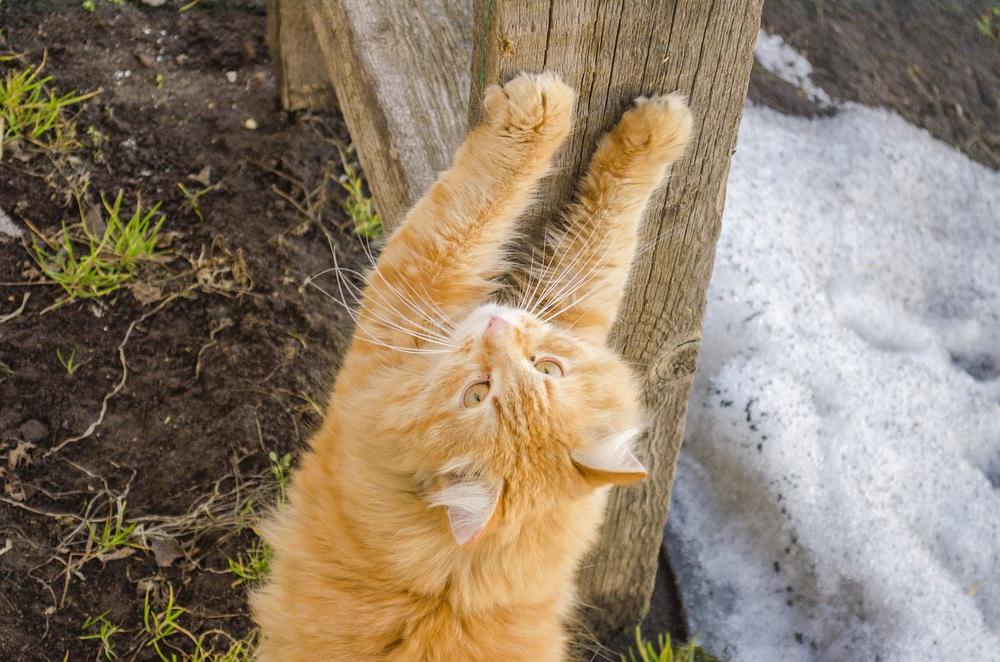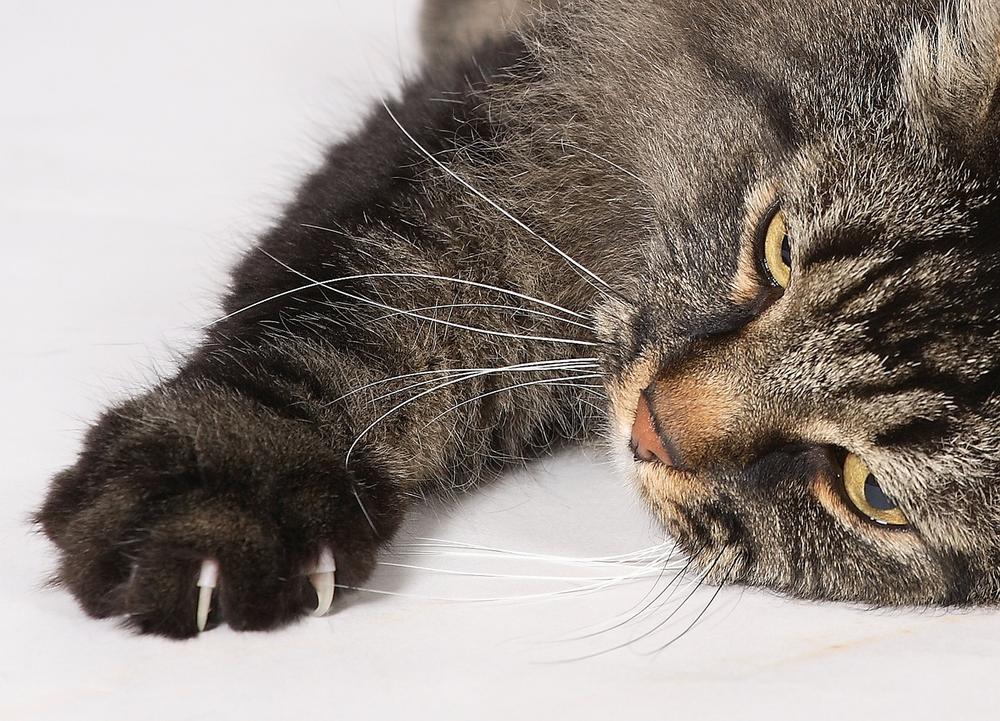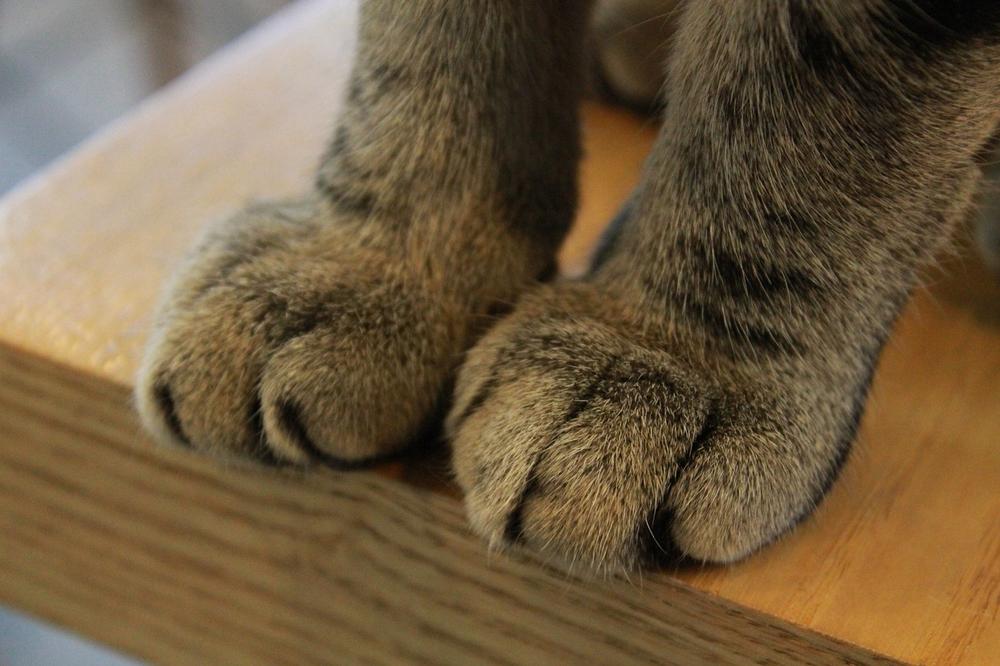Trimming a Cats Claws: Is It Really Necessary to Do It?

Are you afraid of turning your living room into a feline battlefield?
Worried about accidentally injuring your precious fur baby?
😺
Well, hold onto your scratching posts because we're about to answer all your burning questions.
Let's dive right in!
The Importance of Regular Cat Nail Trims
To ensure the health and well-being of your cat, make regular nail trims a priority.
Follow these 10 simple steps:
- Schedule nail trims every two to three weeks.
- Use proper cat nail trimmers or clippers.
- Find a quiet, comfortable area for trimming.
- Start grooming from a young age to get them used to it.
- Gently press on their paw pads to extend claws.
- Only trim the curved tip of each claw.
- Be careful not to trim too close to the quick.
- Adjust the frequency based on your cat's activity level.
- Pay attention to rear claws and front dewclaws.
- Use positive reinforcement and rewards.
With regular cat nail trims, you can:
- Prevent pain and difficulty walking.
- Protect furniture from scratches.
- Reduce the risk of infections in aging cats.
- Promote overall health and comfort.
- Minimize the chance of injury to humans and animals.
Consistency is key.

Keep up with this routine, and both you and your cat will benefit greatly.
Main points I'll expand upon further down this article:
- Cats have retractable claws that serve various purposes in their daily lives.
- The necessity of trimming a cat's claws depends on their lifestyle.
- Choose the right tool, such as clippers or scissors, and keep it sharp.
- Trim in a well-lit area and have a container for trimmed nails.
- Avoid cutting too close to the pink part of the nail to prevent bleeding.
- Use styptic powder or soap to stop bleeding if necessary.
- Handle the cat with care and seek assistance if needed.
- Nail-trimming is a humane alternative to declawing.
- Offer rewards and praise to make the process easier.
- Seek professional help if your cat refuses nail trimming or there are signs of trouble.
But here's the interesting thing...
Did you know that the necessity of trimming a cat's claws can vary depending on their lifestyle?
And not only that, but their retractable nails also regrow rapidly.
Let's dive deeper and explore the factors that influence whether or not your furry friend needs regular nail trims:
Common Misconceptions About Cat Claw Trimming
Cats and nail trims.
Some people think cats hate them, but that's not always true.
With a little positive reinforcement and patience, many cats can be trained to tolerate or even enjoy having their nails trimmed. Why do cats have claws in the first place?
Well, they serve multiple purposes:

Hunting, climbing trees, and marking territories.
On their hind legs, cats have four toes, while on their front legs, they have five, including a dewclaw that helps them climb.
Now, whether your cat needs regular nail trims depends on their lifestyle - if they spend most of their time outdoors or indoors.
And here's an interesting fact:
Cats have retractable nails that grow back quickly.
So keep that in mind.
Tools You Need for Trimming Your Cat's Claws
Importance of having the right tools for trimming your furball's claws
When it comes to trimming your cat's claws, you need to have the right tools.
You want to ensure that you can trim their claws safely and effectively while minimizing any discomfort or bleeding.
To start off, make sure you have pet nail clippers with sharp blades.
These clippers are specially designed for trimming cat claws and will help you get the job done accurately.
You can easily find them at a vet clinic or a nearby pet shop.
Trust me, investing in these clippers is totally worth it!
The proper technique for claw trimming
Alright, now that you've got your claws clippers ready, let's talk about how to do it properly.
First of all, find a well-lit area, as good visibility is key to avoiding accidents.
Oh, and don't forget to grab something to catch the trimmed nails because those things can fly all over the place!
Now, here's the most crucial part:
Make sure you don't cut too close to the pink part of the nail. That sensitive region is known as "the quick," and if you accidentally cut into it, your furry friend may experience pain and bleeding. Ouch!
If you accidentally cut too deep and bleeding occurs, simply apply some styptic powder, cornstarch, or even soap to stop the bleeding.

Crisis avoided!
How to handle your stubborn feline during claw trimming
Now, let's discuss how to handle your cat during the claw trimming process.
They might not be very cooperative, so keep their temperament in mind.
Try holding your cat gently in the crook of one arm or resting them on a table.
Make sure they feel secure and supported before proceeding.
And don't worry, if your little buddy isn't cooperating, you can always ask someone else for help.
Before you start trimming, gently press down on the joint behind the tip of the claw to extend it.
This will make it easier for you to trim without causing any harm.
And please remember, take your time and go slow.
The key is to make your cat comfortable with the process.
Oh, and one last thing!
When introducing your cat to the trimming process, gradually get them used to the clippers, give their paws a gentle massage, and always stay away from the pink quick.
With a bit of practice and some tender loving care, you'll become an expert at keeping your furball's claws neat and tidy.
Alternatives to Trimming Your Cat's Claws
Here are some options to make trimming your cat's claws easier:
- Give them something to scratch on: Get scratching surfaces and toys that can help file down their claws.
- Praise and reward good behavior: Encourage your cat during nail-trimming sessions, and they might start cooperating more.
- Ask a vet for advice: If you're not comfortable doing it yourself, consult a professional for guidance and assistance.
- Indoor cats should have scratching posts: These provide a safe space for your cat to scratch and maintain their claws.
- Use repellent spray: Redirect your cat's scratching by spraying deterrents on areas you want them to avoid.
- Give treats after trimming: Reward your cat with treats to create a positive connection with nail trimming.
- Seek professional help if needed: If your cat refuses or has any medical issues, don't hesitate to reach out to an expert.
Make nail trimming easier and more effective for both you and your cat with these techniques. Discover the approach that works best for your beloved feline. 😺
And if you're looking for even more valuable information on caring for cats, particularly during the cold winter months, I have just the article for you.

Discover expert guidance on what to feed feral cats in winter and how to provide proper care in cold weather in my comprehensive guide, What to Feed Feral Cats in Winter.
Explore the best practices and must-know tips to ensure the well-being of these amazing animals.
Don't miss out on this essential resource, because your furry friends deserve the best.
And that wraps up today's article.
If you wish to read more of my useful articles, I recommend you check out some of these: My Cat Has Worms How Do I Clean My House, Why Is My Cats Nose Bleeding, Cats Hair Falling Out in Clumps, and Do Cats Pant When Hot
Talk soon,
-Sarah Davis